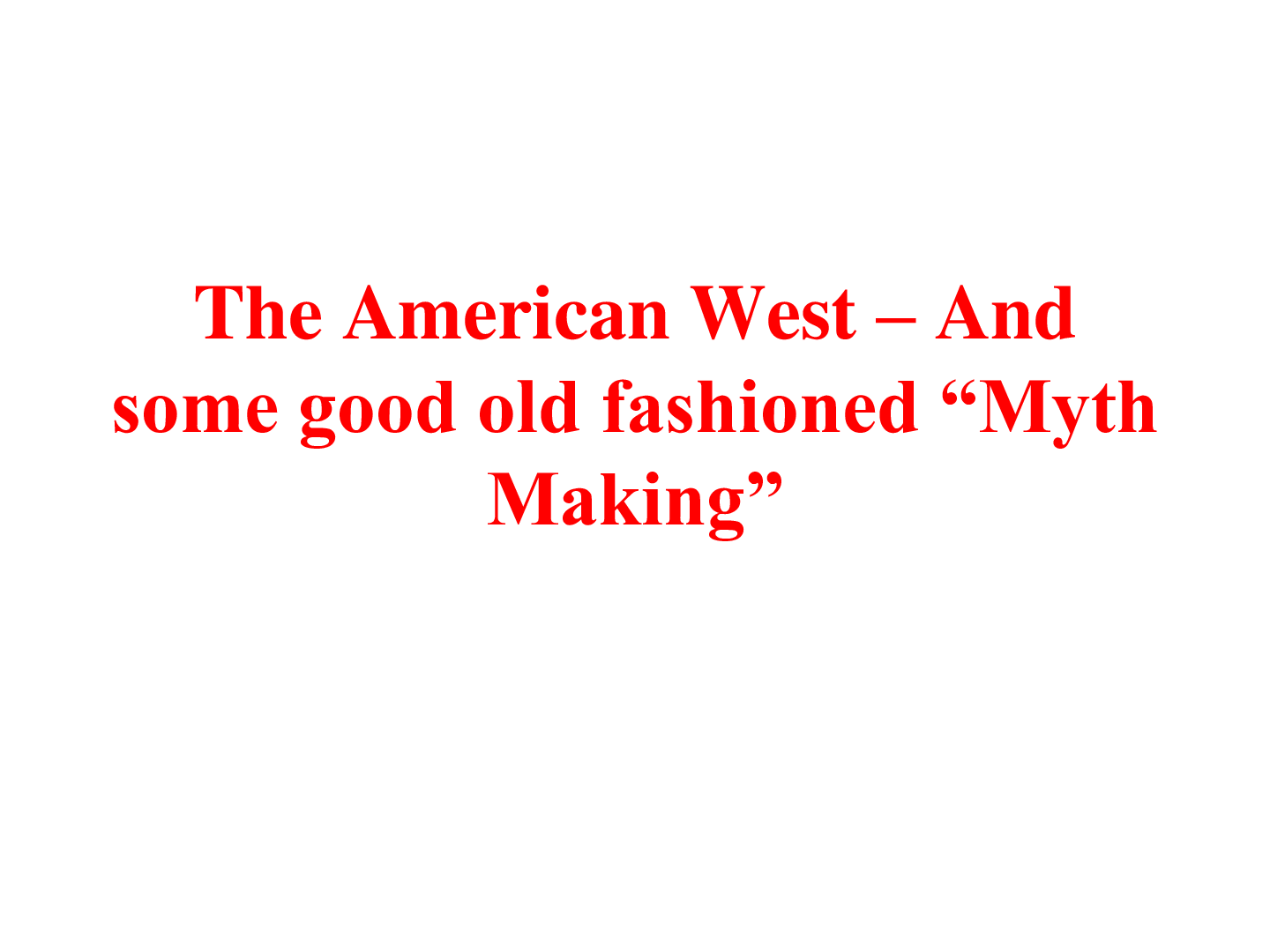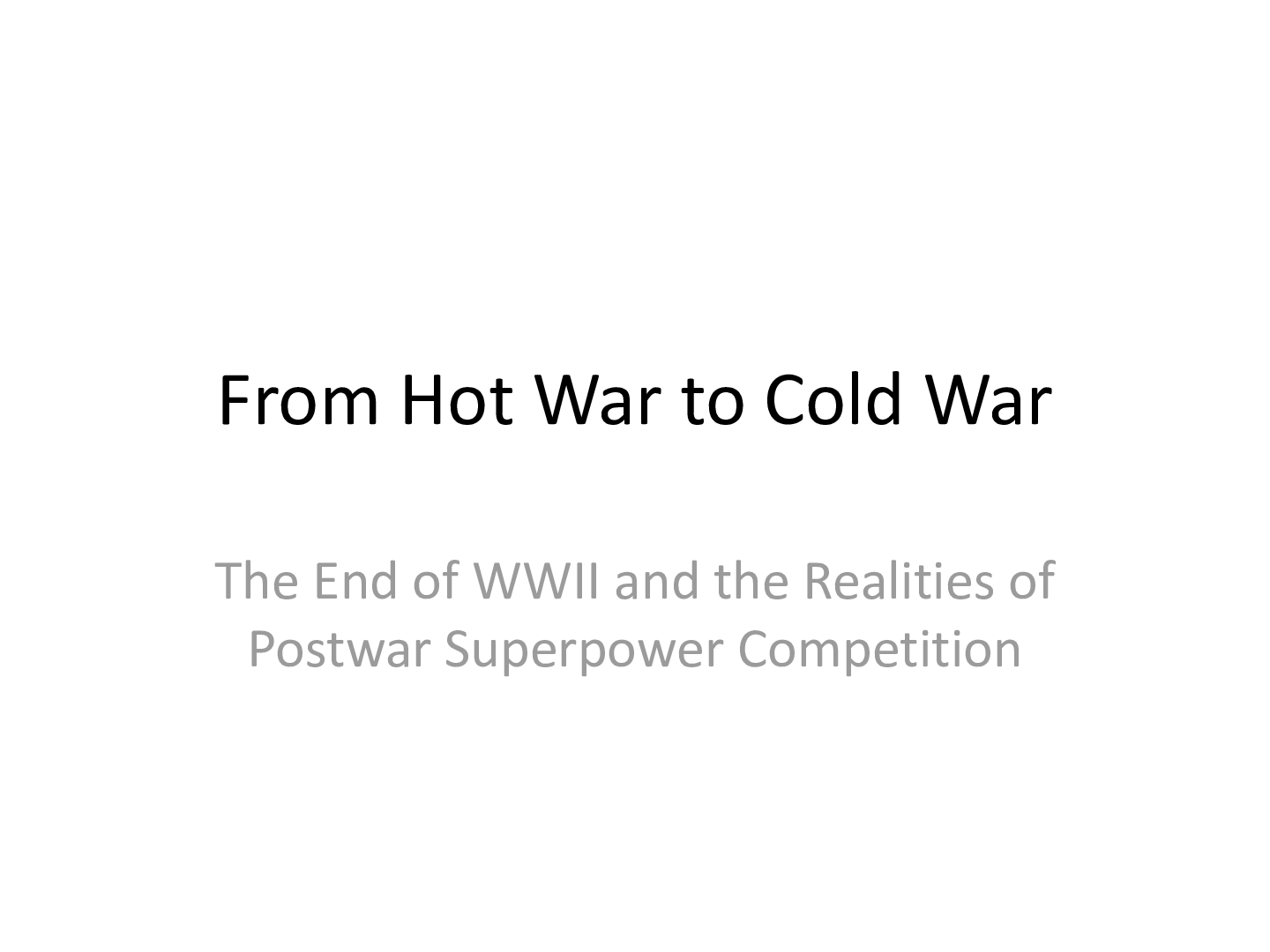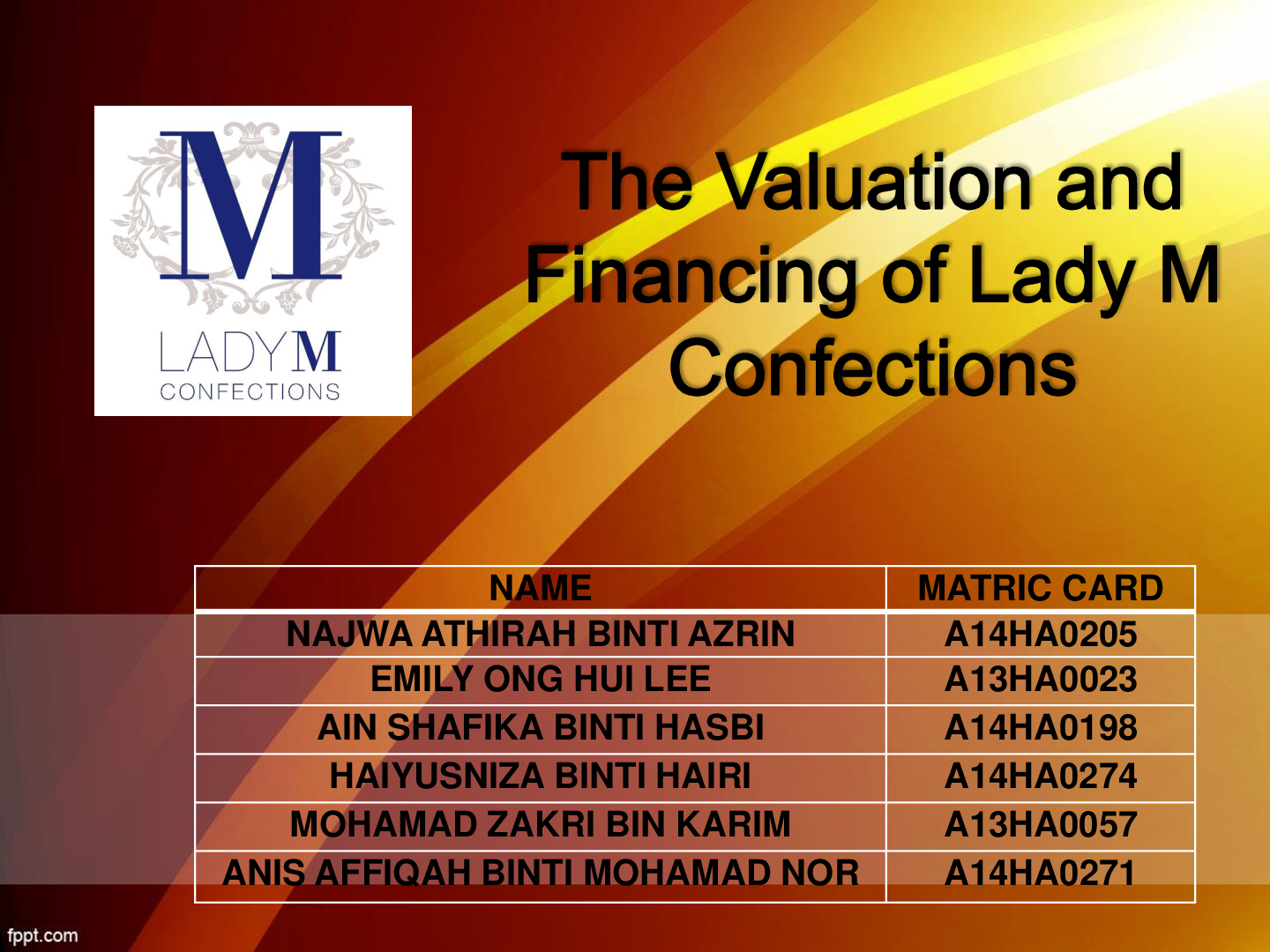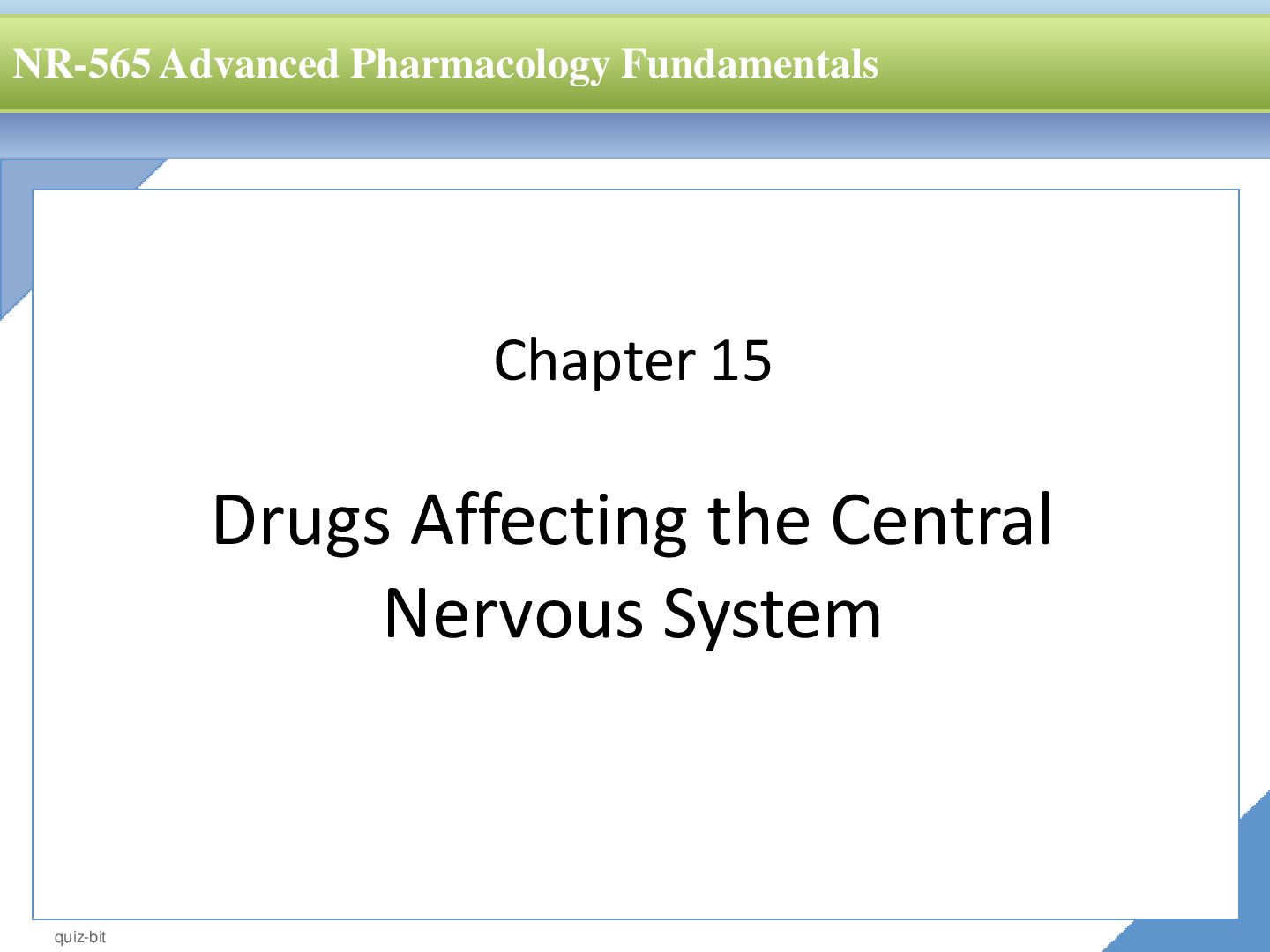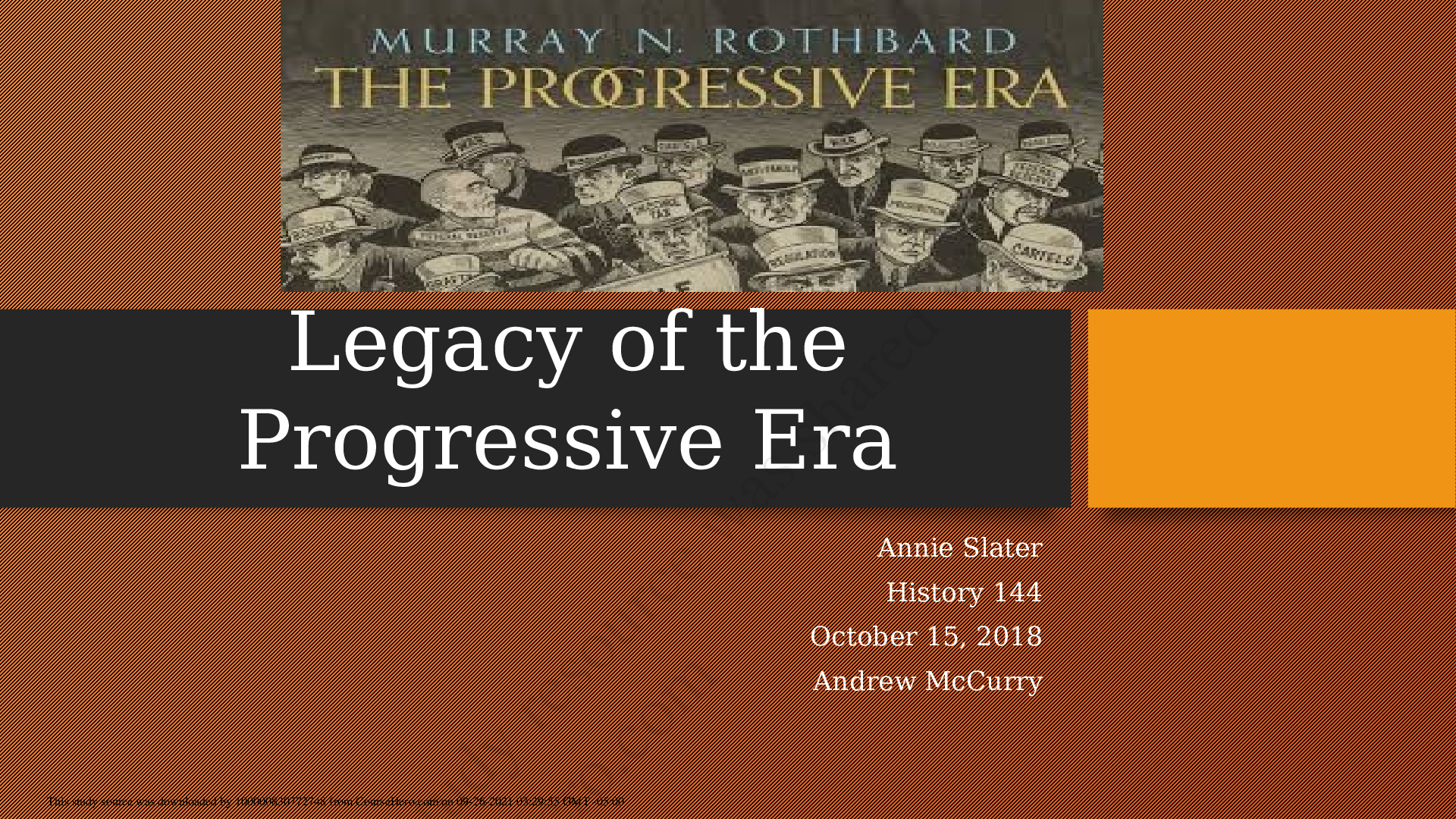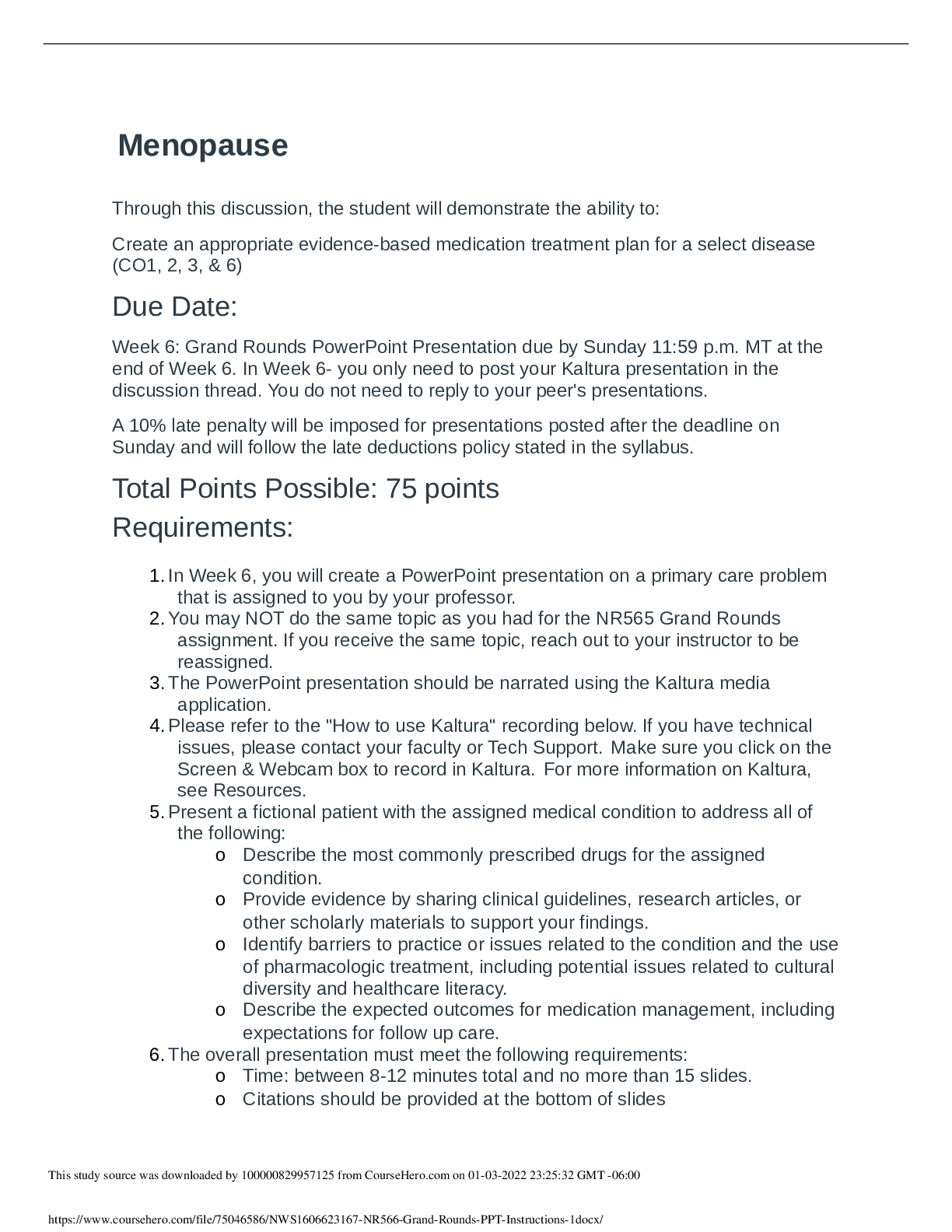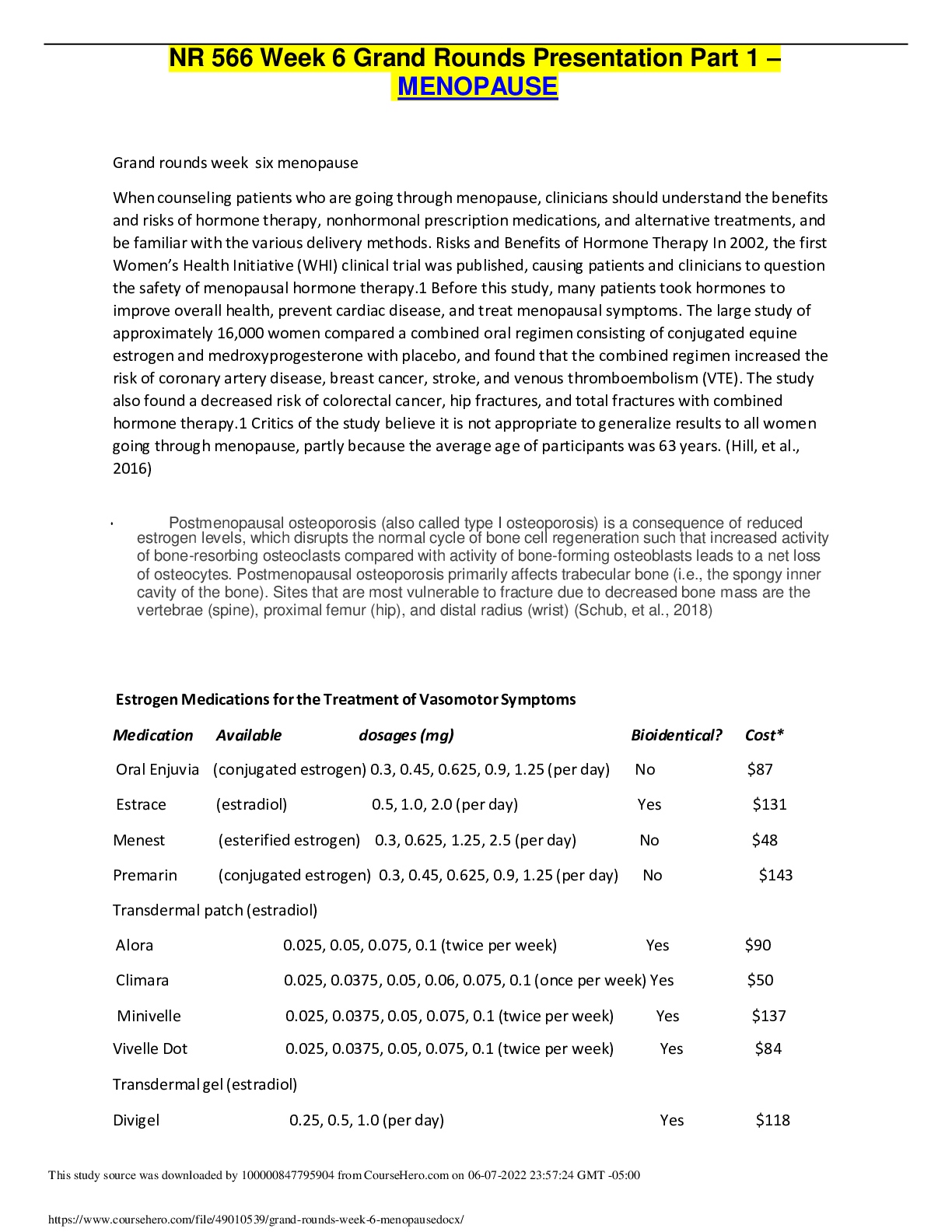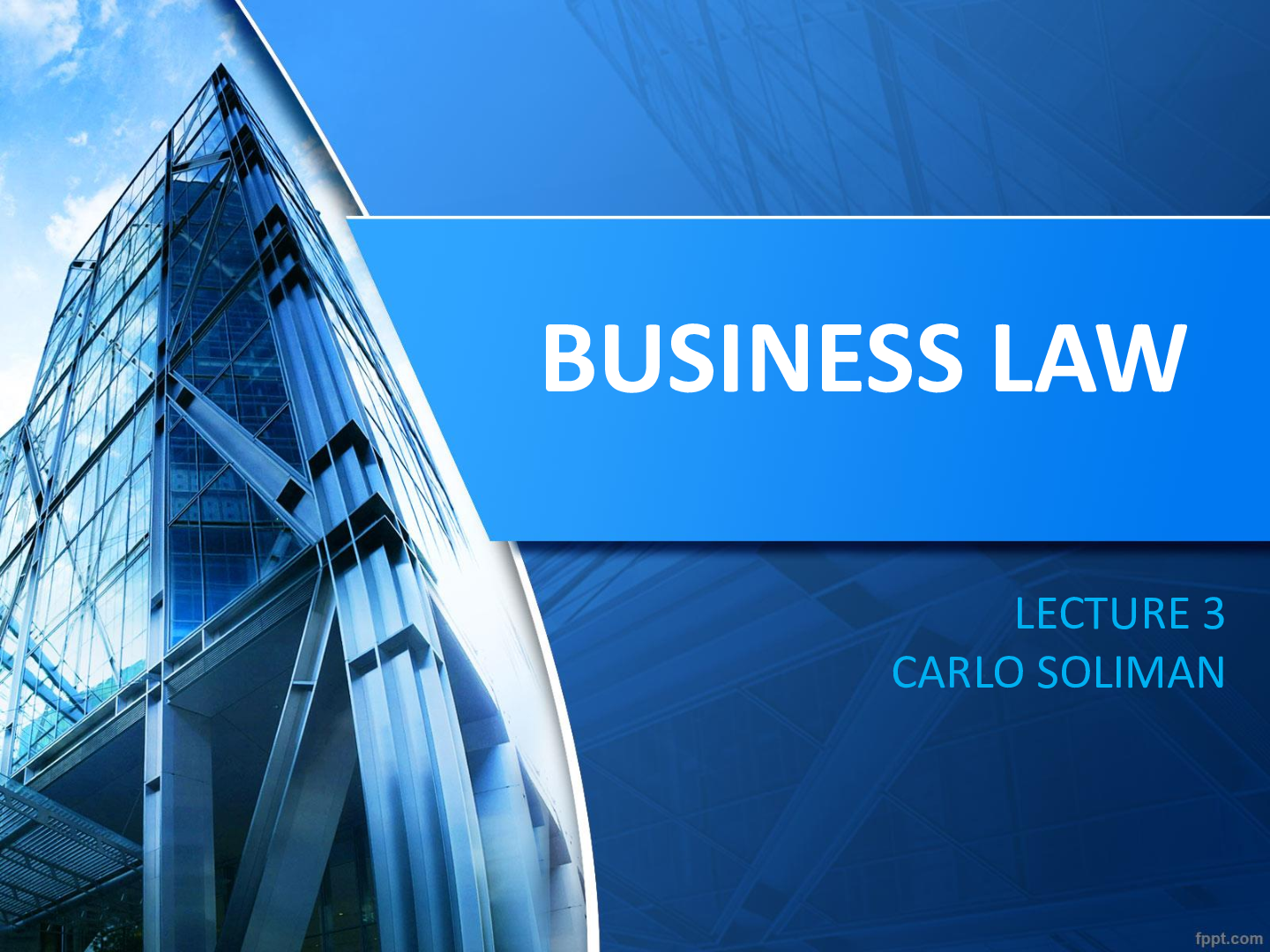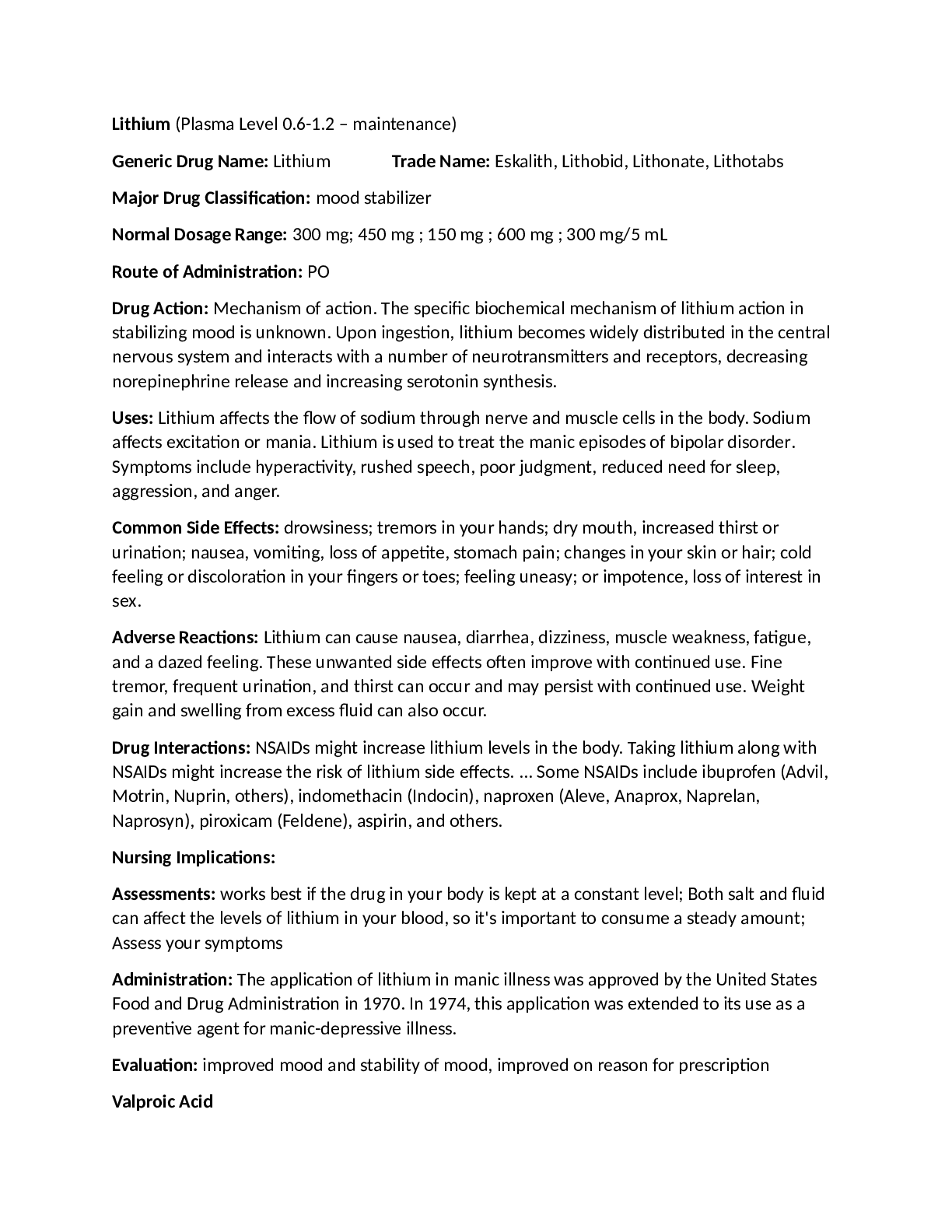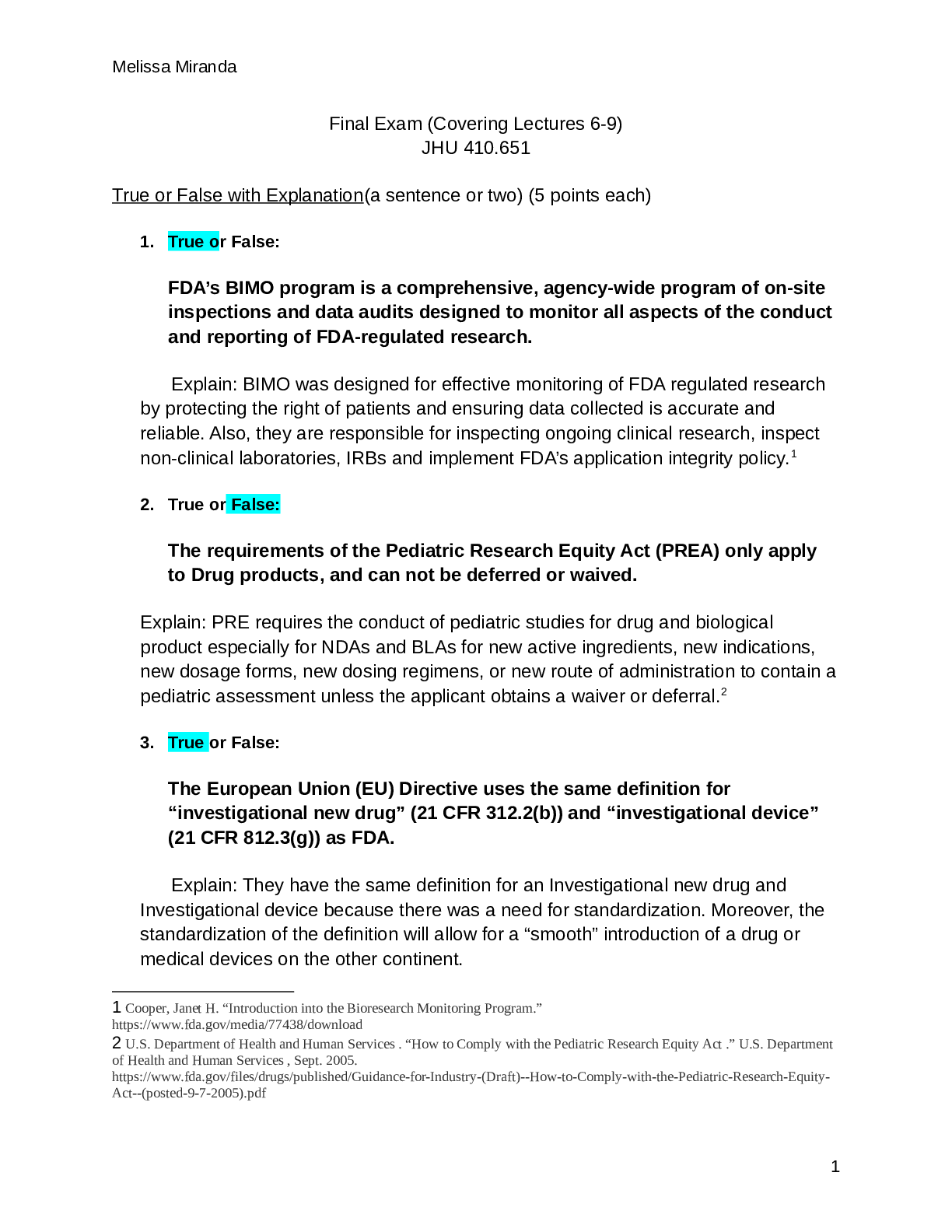Management > Presentation > Organizational Psychology Notes, Question and Answers presentation. est Content (439 Pages) (All)
Organizational Psychology Notes, Question and Answers presentation. est Content (439 Pages)
Document Content and Description Below
What is social categorization? Social categorization and diversity management Diversity management vs. legal compliance Compliance with governmental regulations Diversity Management: Different ... Approaches What is culture? Culture is the set of core values and taken-for-granted collective beliefs and assumptions So, why is culture so important? Stronger culture results in higher homogeneity of behaviors within a given group Hofstede‘s model of culture Power distance, uncertainty avoidance, individualism/collectivism, and masculinity/femininity Your company will open a new R&D site in Tokyo, Japan. Laurie Smith has been identified as a general manager who will be responsible for running the site‘s operations during the first two years. Her job responsibilities will include: strategic planning, setting up new processes, hiring new employees, managing individual and group performance, providing feedback and assigning rewards to all employees. Based on national culture indices: 1. what could be some critical behavioral challenges that Laure may face in Japan? Provide some examples. 2. In our opinion, what KSAOs (competencies) Laurie should possess be critical to successfully complete this assignment? Explain. 3. What should your company do to help Laurie succeed in this new position? Model of organizational culture (Edgar Schein) Three layers of organizational culture Do firms need modern managers? Will diversity impact employee behaviors? What is organizational culture? Can culture help us generate desired behaviors? Do individual traits matter? Can personality (or emotional intelligence) predict employee behaviors? Can motivation impact behaviors? Are we all biased? How do groups and teams behave? How do groups make decisions? Is organizational conflict always bad? How to increase influence, power, and use workplace empowerment Can leadership impact behaviors? How can managers effectively manage change (or change employee behaviors)? Elton Mayo – Western Electric Hawthorne study (supportive supervision) Main questions: What can we do to keep employees highly motivated? McGregor’s Theory of Management There are four layers of diversity in the workplace Personal factors Internal factors External factors Organizational factors What could explain these findings? Why do women and minorities encounter more obstacles to their advancement, leadership, and authority than men? How could social categorization impact relationships among employees? Explain. Could social categorization have positive effects in the workplace. Explain and provide an example. How could social categorization impact managerial decisions? Explain and provide two specific examples of such decisions. What could companies do to reduce the negative impact of social categorization in the workplace? Provide two examples Kelley‘s model of attribution: We develop a tendency to think that other people‘s behaviors can be attributed either to: Internal factors within a person (such as one‘s ability) Impact of Culture and Individual Behaviors Due to strong values (e.g., religion), some cultures had agreed (collective beliefs) that homosexuality should be viewed as “sickness” or “perversion. Branden’s Six Pillars of High(er) Self-Esteem 1. Live consciously—always stay engaged with what you do and with whom you interact 2. Be self accepting—do not be overly judgmental of your actions 3. Take personal responsibility — take full responsibility for your actions and results (do not play victim) 4. Be assertive—respectfully stand behind your beliefs rather than bending to other’s will 5. Live purposefully—always set short-term and long-term goals and a realistic plan to achieve it (keep yourself motivated) 6. Have personal integrity — be true to what you think is critical in life (your behaviors should reflect your values) Can showing emotions impact workplace outcomes? • Should managers be concerned with showing their own emotions to employees? • How should managers respond to employees demonstrating negative emotions? Gary has only forty-eight dollars, but he can buy a bicycle that costs one hundred twenty dollars, (disregarding tax) if he borrows fifty-seven dollars from Jane and fifteen dollars from Jill • Nine chickens, two dogs, and three cats have a total of forty legs Gardner’s Multiple Intelligences Framework • Linguistic intelligence--potential to learn and use spoken and written language • Logical-mathematical intelligence--potential for deductive reasoning, problem analysis, and mathematical calculation. • Musical intelligence--potential to appreciate, compose, and perform music. • Body-kinesthetic intelligence--potential to use mind and body to coordinate physical movement. • Spatial intelligence--potential to recognize and use patterns. • Interpersonal intelligence--potential to understand, connect with, and effectively work with others • Intrapersonal intelligence--potential to understand and regulate oneself. What is cognitive dissonance? Psychological discomfort a person experiences when his or her attitudes are incompatible with his or her behavior Three types of commitment • Affective commitment — I really want to stay with an organization (it is a great place for me) • Continuance commitment — I need to stay with a firm (positive vs. negative) • Normative commitment — I feel I ought to remain with the organization (e.g., it is my ethical oblig What could management do to increase an employee’s affective, continuance, and normative commitment? Alderfer’s ERG Theory Human behavior is motivated by • Existence needs (E) desire for physiological and materialistic wellbeing Maslow’s theory? Needs are not related to each other in a stair-step hierarchy McClelland’s Need Theory Three main motivators: • Need for achievement desire to accomplish Will people driven by different motivators (e.g., power or achievement) display different behaviors? The Herzberg’s Motivator - Hygiene Model Our perception of organizational justice is composed of three elements Goals Setting Theory .Could management boost employee motivation by increasing organizational justice? Explain and provide an example of a specific action that would positively impact each of the three components of organizational justice. 2.In their article (Harvard Business Review, 2008), the authors use all theories of motivate to introduce the four main drivers of employee motivation (p.2-3). Based on the article: a. Briefly explain the four drivers of employee motivation b. Identify a specific organizational factor that a company could use to fulfill each of the four drivers. Explain how each identified factor can help fulfil a diver of motivation. [Show More]
Last updated: 1 year ago
Preview 1 out of 107 pages

Reviews( 0 )
Document information
Connected school, study & course
About the document
Uploaded On
Mar 25, 2020
Number of pages
107
Written in
Additional information
This document has been written for:
Uploaded
Mar 25, 2020
Downloads
0
Views
77




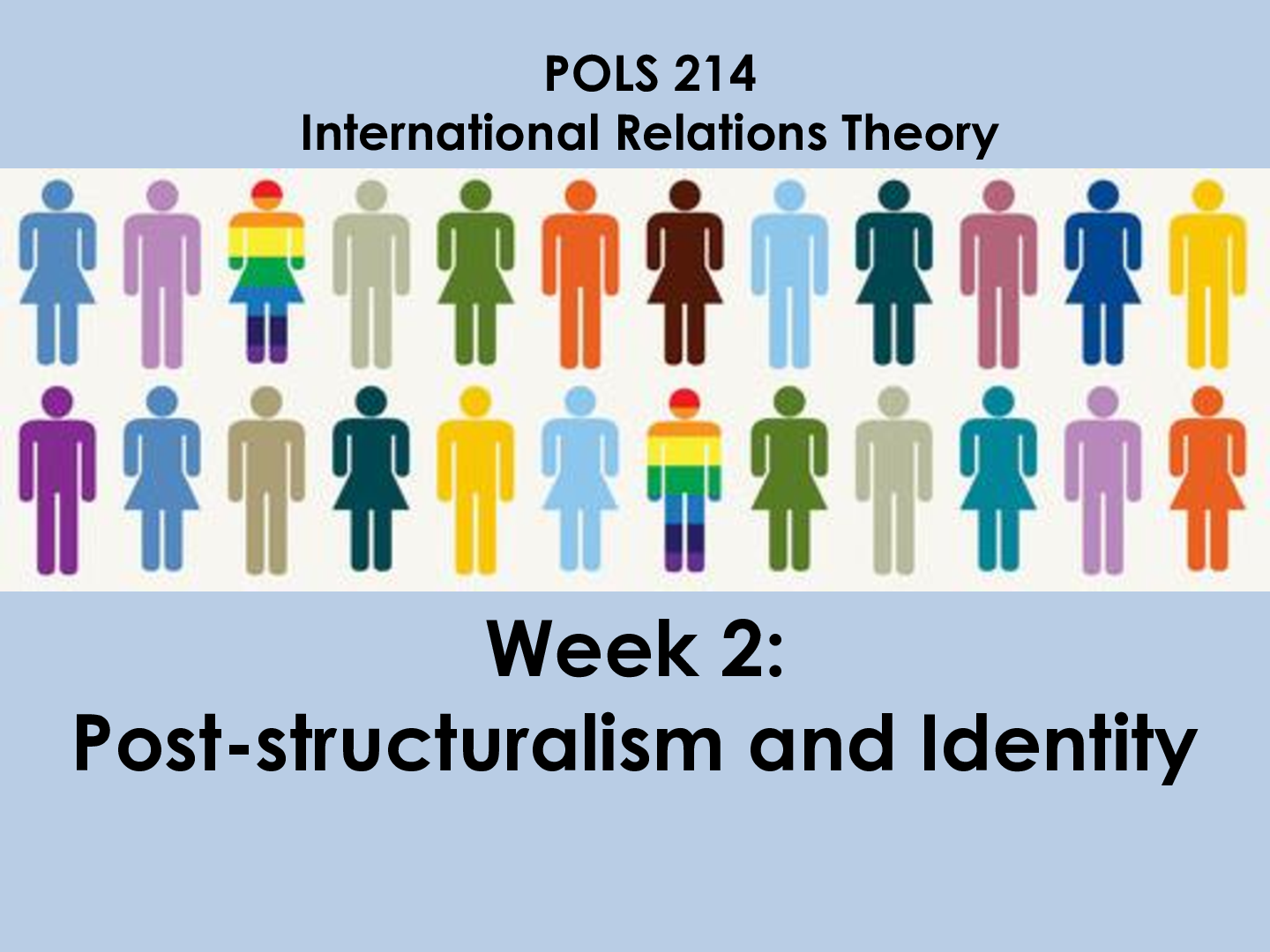
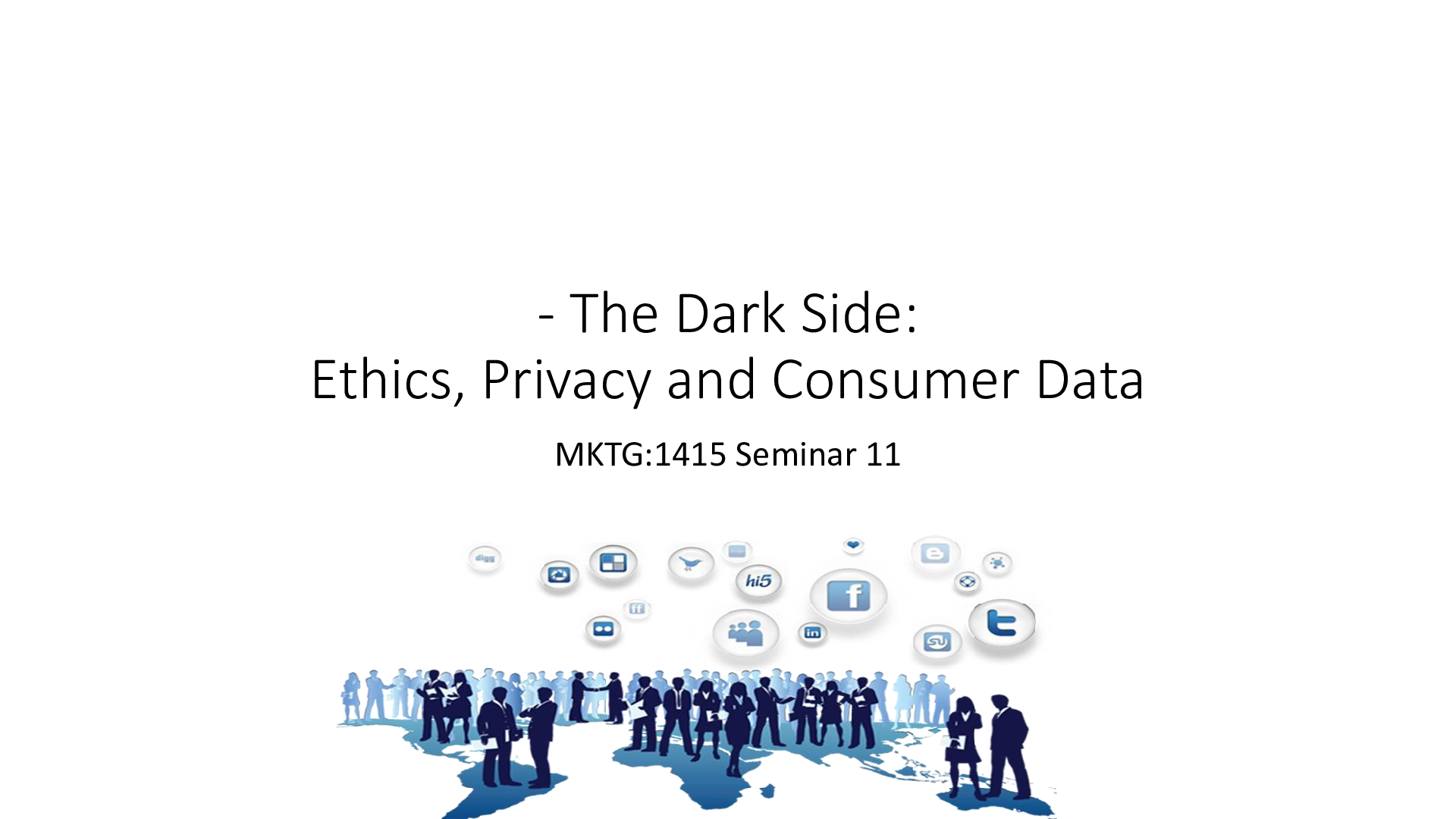
.png)







